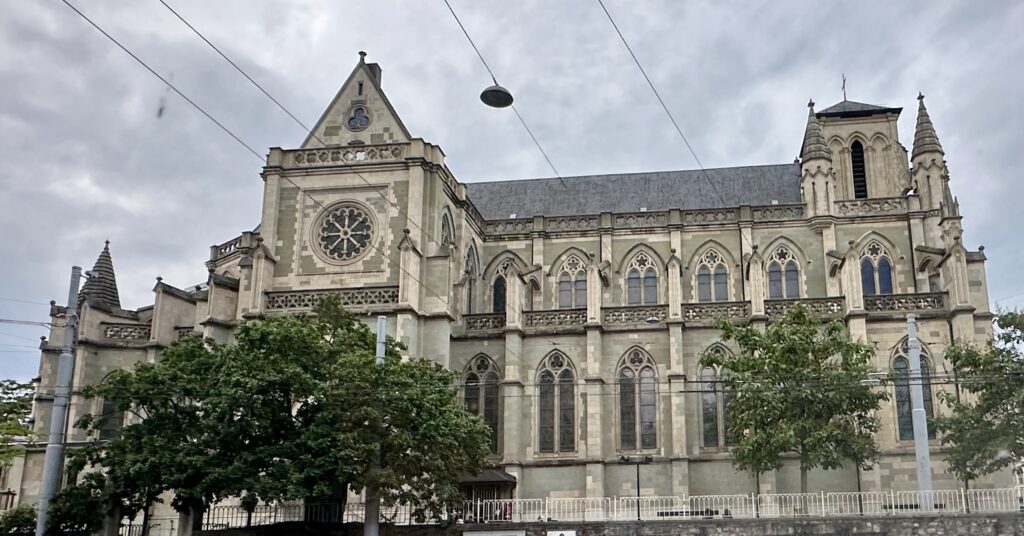2 nights in Hotel Ambassador
We checked into our hotel which was located on lake Geneva. We could see the lake from our room. We then went for a stroll along the lake and across the bridge close to our hotel, over to old town.
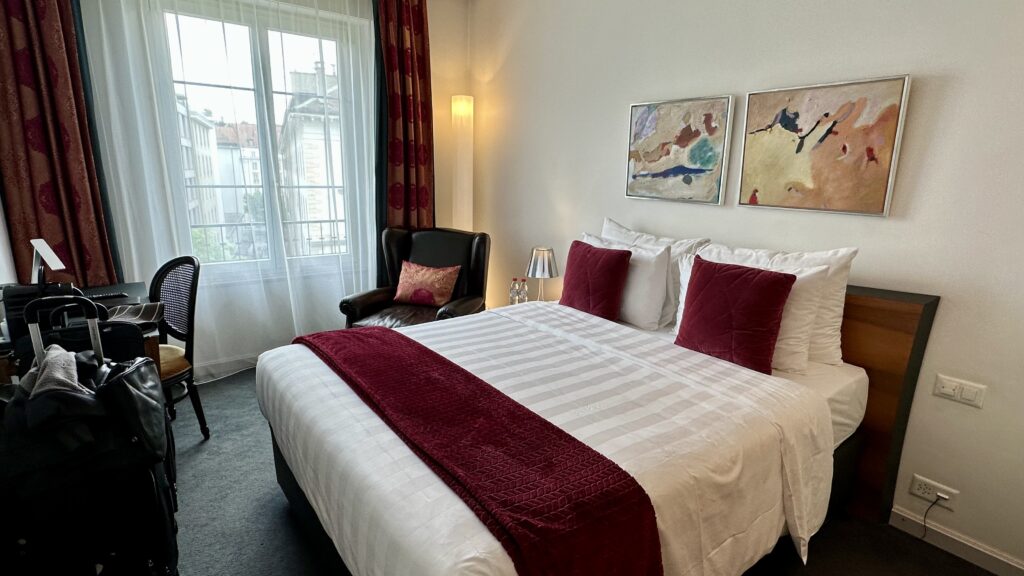
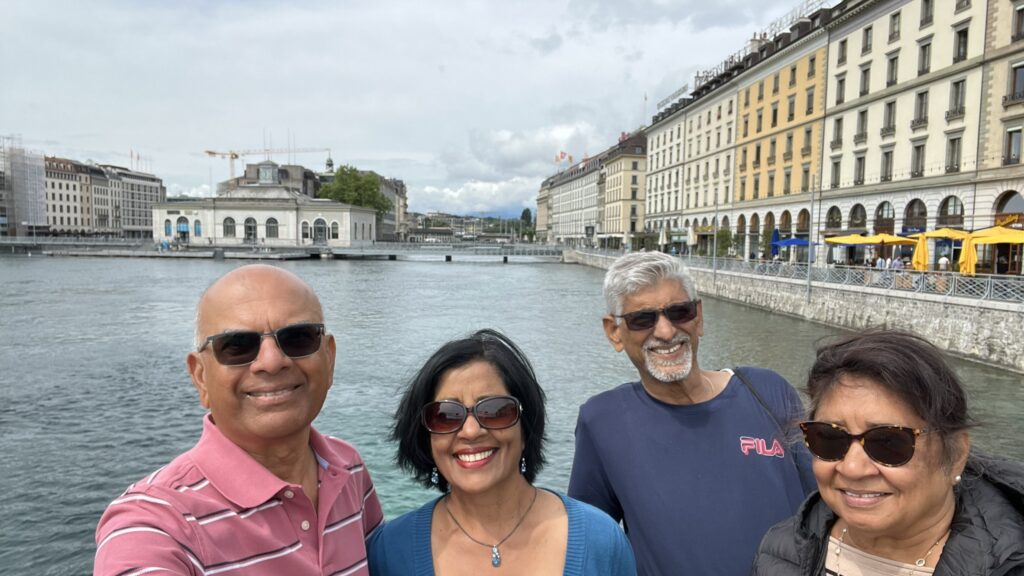
- Place du Molard
- Cathedral of Saint-Pierre
- Old Arsenal
- Brunswick Monument
- Jet d’Eau (Water Jet)
- Lake Geneva
- Jardin Anglais (English Garden)
- Palais des Nations
- Broken Chair
- Basilique Notre-Dame
Place du Molard – This square is one of the city’s oldest commercial areas and was first mentioned as a port back in 1271. In the 16th century, the area around Molard became the economic center of the city fitted with warehouses, offices, hotels, printers, etc. At the center of the square is the Molard Tower (aka Clock Tower) which is a remnant of the defensive wall that used to protect the port of Molard in the Middle Ages. In 1906 it was adorned with a painted frieze taken from the demolished house of Rolle. The frieze features the coats of arms of the key actors in the Reformation history and a sculpture, called “Geneva city of Refuge”.
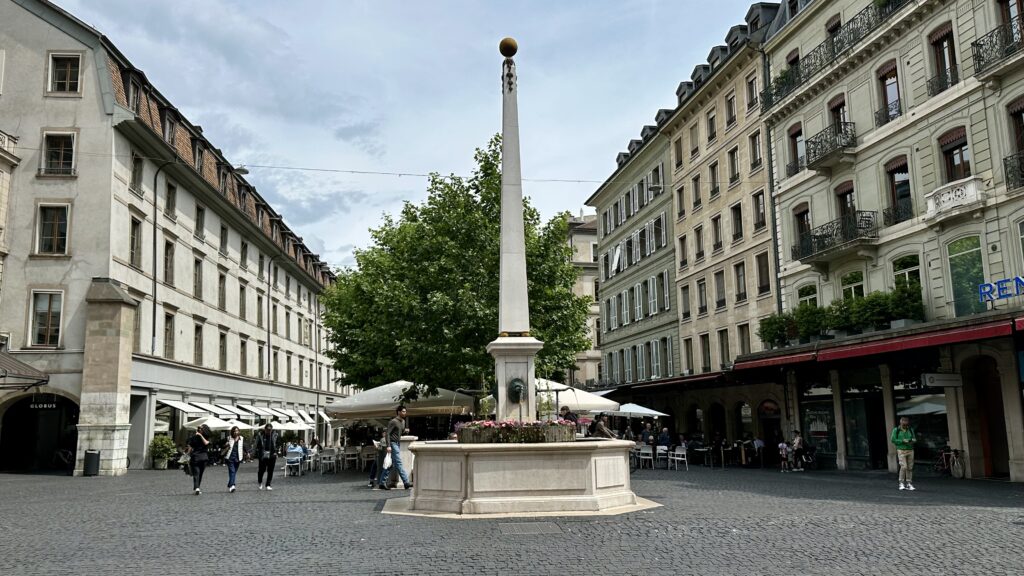
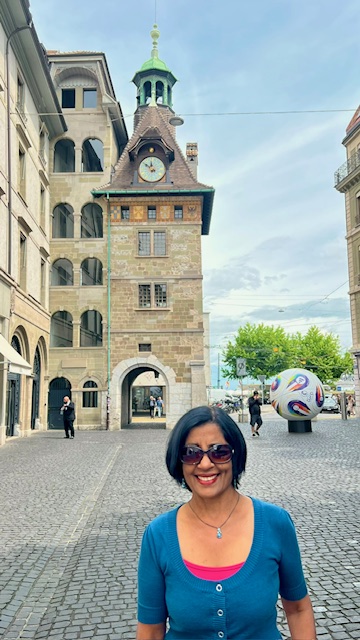
Cathedral of Saint-Pierre – This church was built in the 12th century and was originally a Roman Catholic cathedral. It underwent important transformations in the 16th century. During the time of the Reformation in 1535, the Cathedral became a place of Protestant worship. It is known as the adopted home church of John Calvin, one of the leaders of the Protestant Reformation.
The two principal towers, dating from the 13th century, were never completed. You can climb to the top of both the North and South towers for beautiful views of the lake and town. A corridor connects the two towers making it possible to ascend both without having to return to ground level. 7 CHF to climb the tower
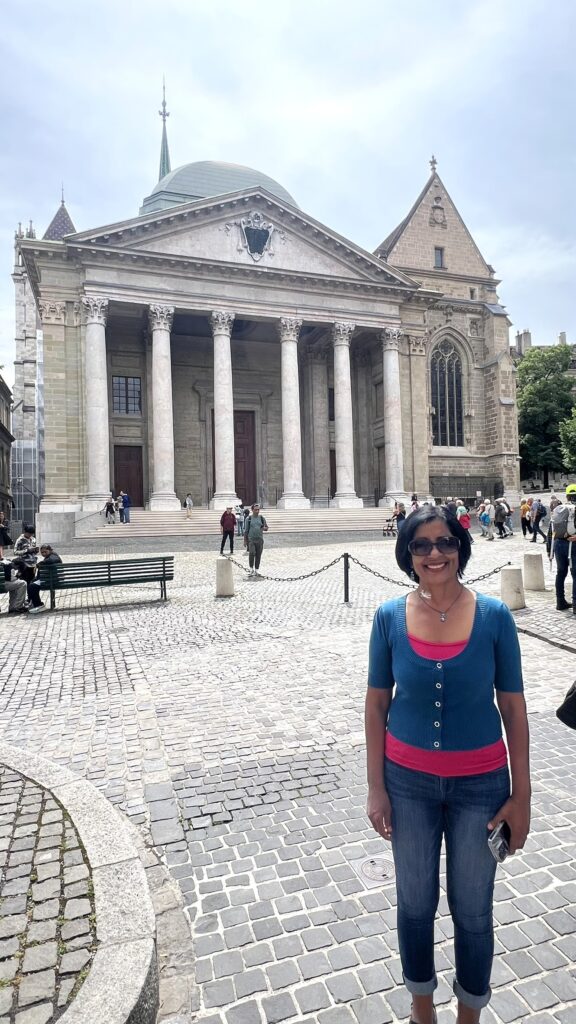
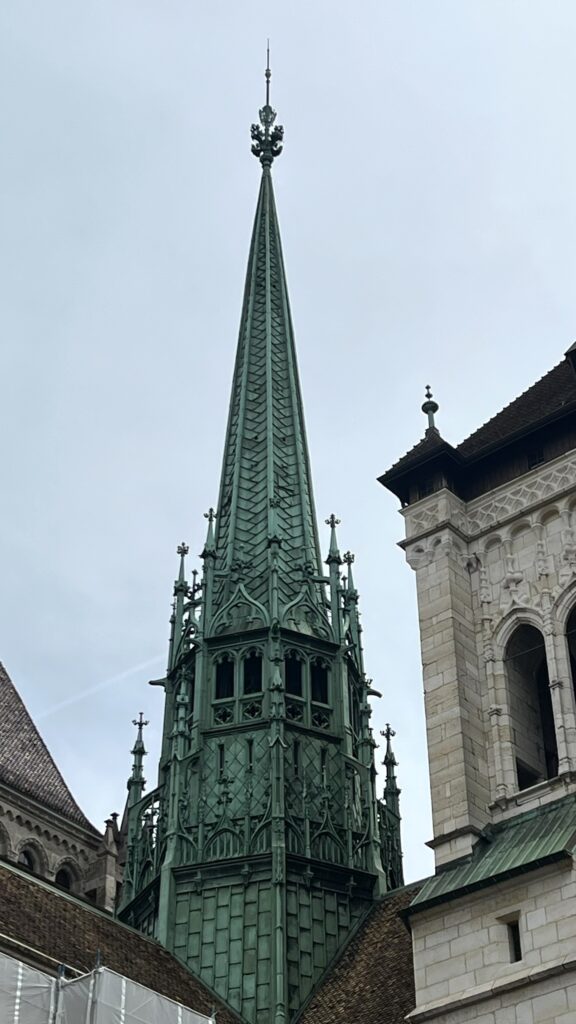
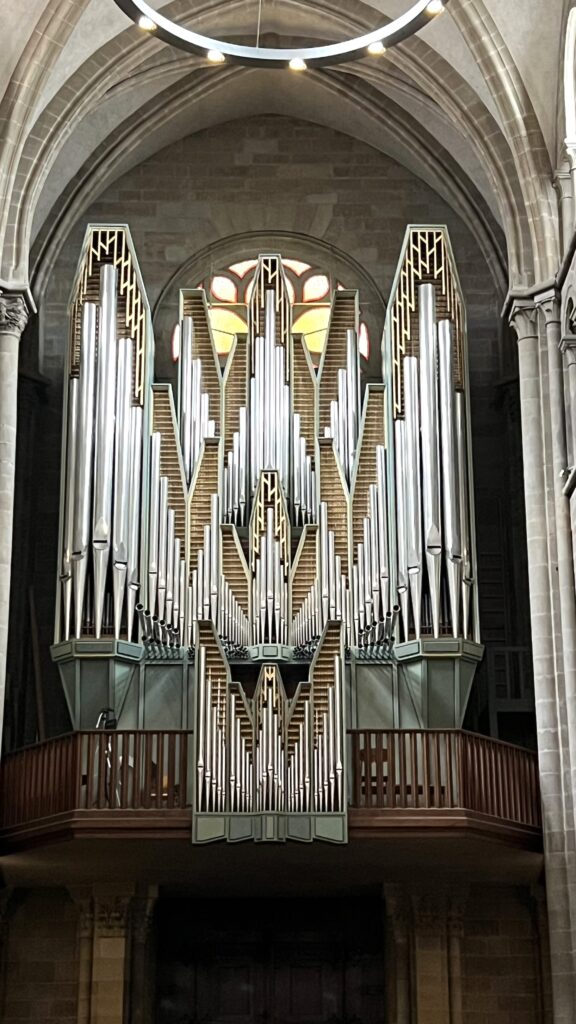
Like all protestant churches in Switzerland, this church has a old, spacious and rather plain interior, highlighted by shiny candle-like looking chandeliers. The church has some beautiful and colorful stained-glass windows adorning its walls.
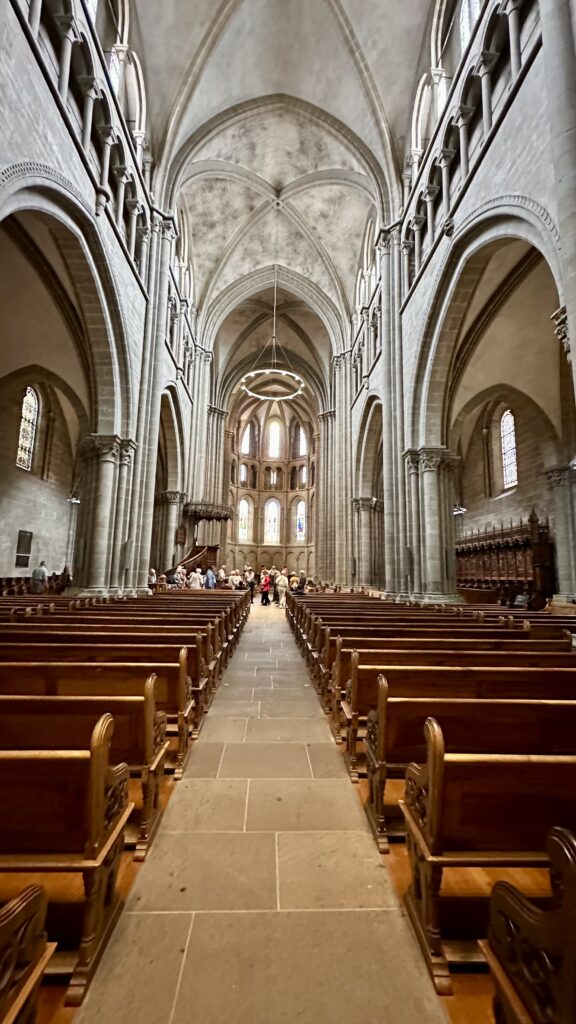
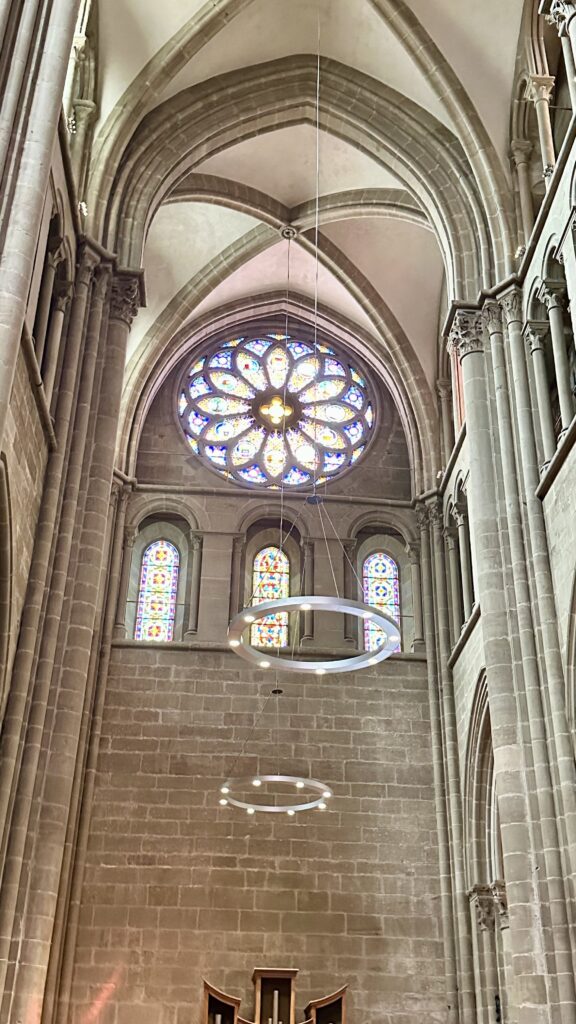
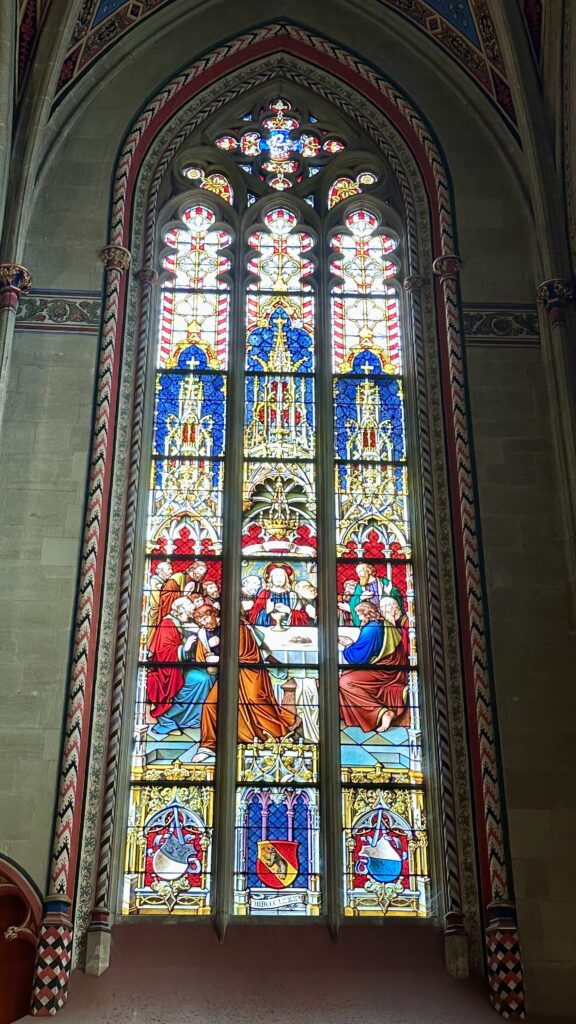
Reformation Museum – This museum is in the same complex as the church and was free to visit with our Swiss travel pass and we did. It’s the only secular museum devoted to the history of both the Reformation and Protestantism. Paintings, objects, books, engravings and audiovisual features are available for your perusal in 12 vibrant rooms.
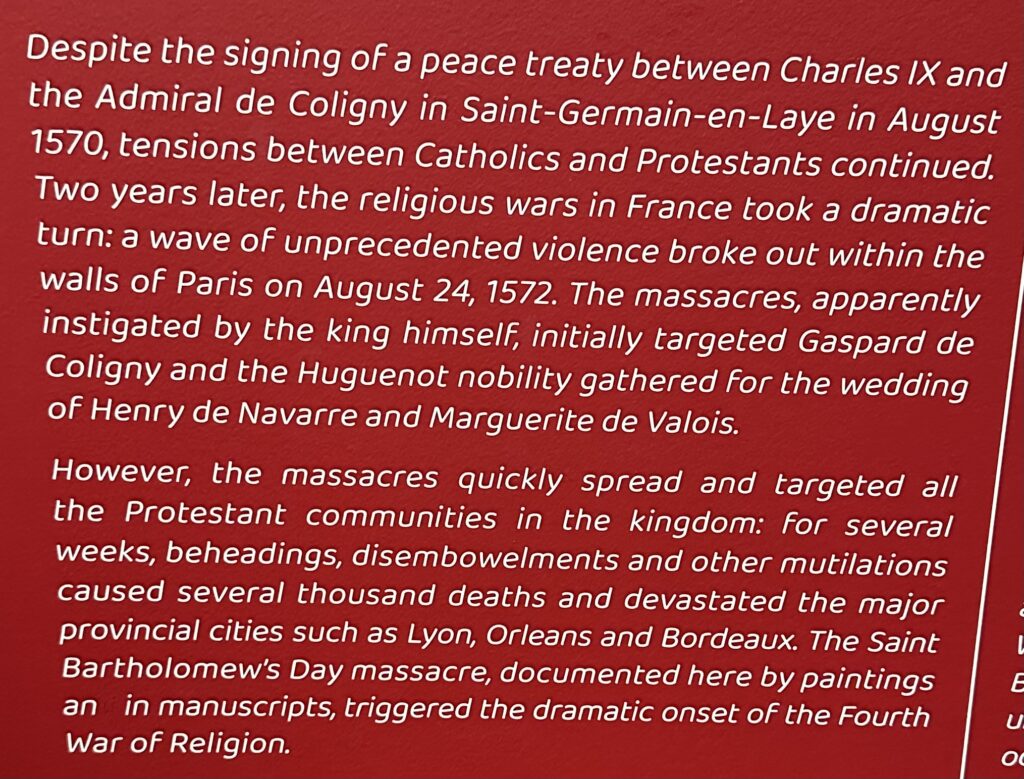
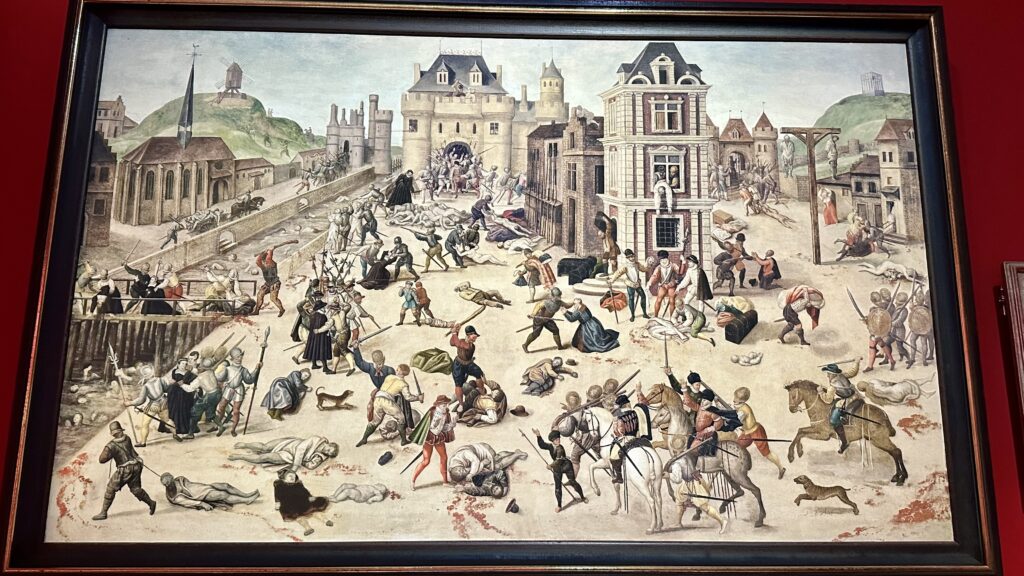
1572, the St. Bartholomew’s Day Massacre led to the 4th war of religion.
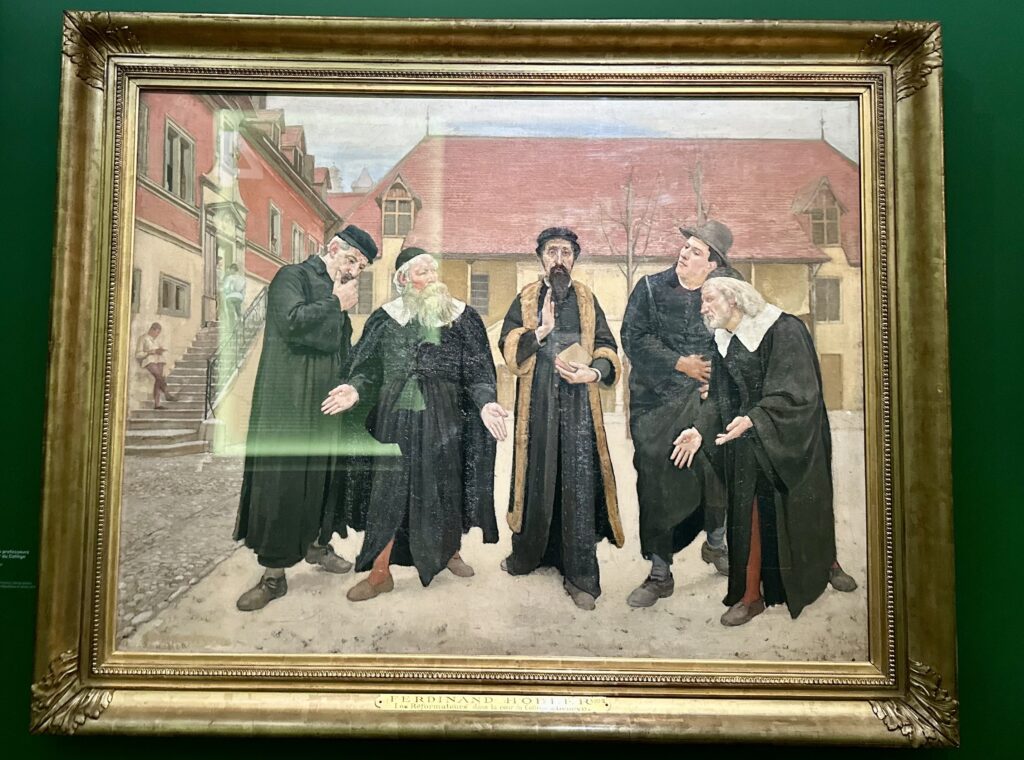
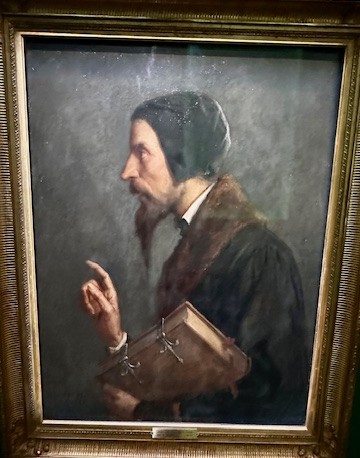
Old Arsenal – or L’ancien arsenal is a historic site located in Geneva’s old town directly across from the Town Hall. Its origins date back to medieval times when it was used as an armory where weapons were stored during times of war. It was also utilized later on by Swiss military forces until it became obsolete with modern warfare advancements. As you enter the site you will notice 3 large cannons – these are authentic pieces dating back centuries and they give you a hint of what lies within this historic building.
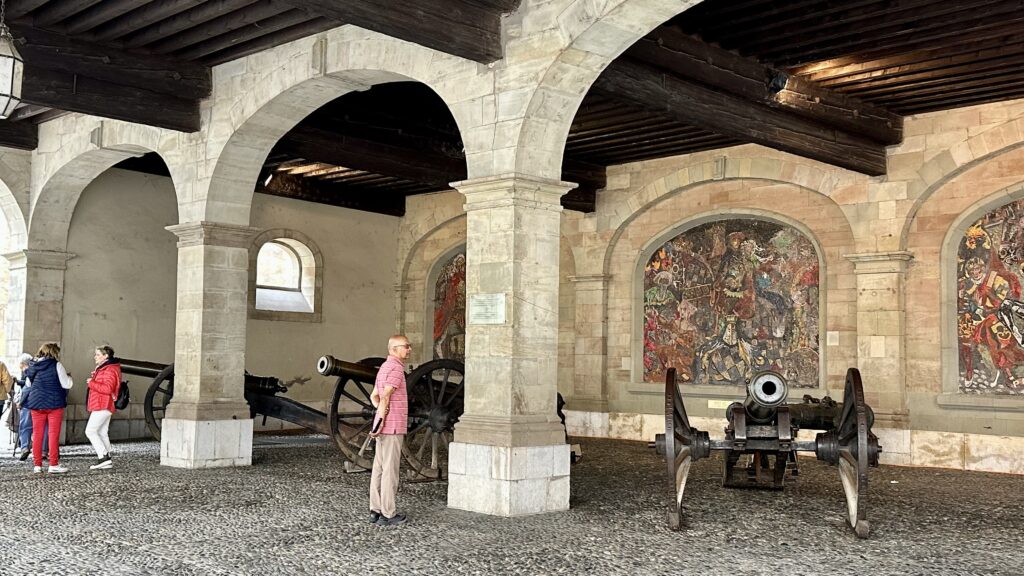
The colorful mosaics adorning its façade represent significant periods in Genevan history: Julius Caesar’s arrival in Geneva; Middle Ages, The Count of Geneva; and the city fair; The reception of Huguenot refugees
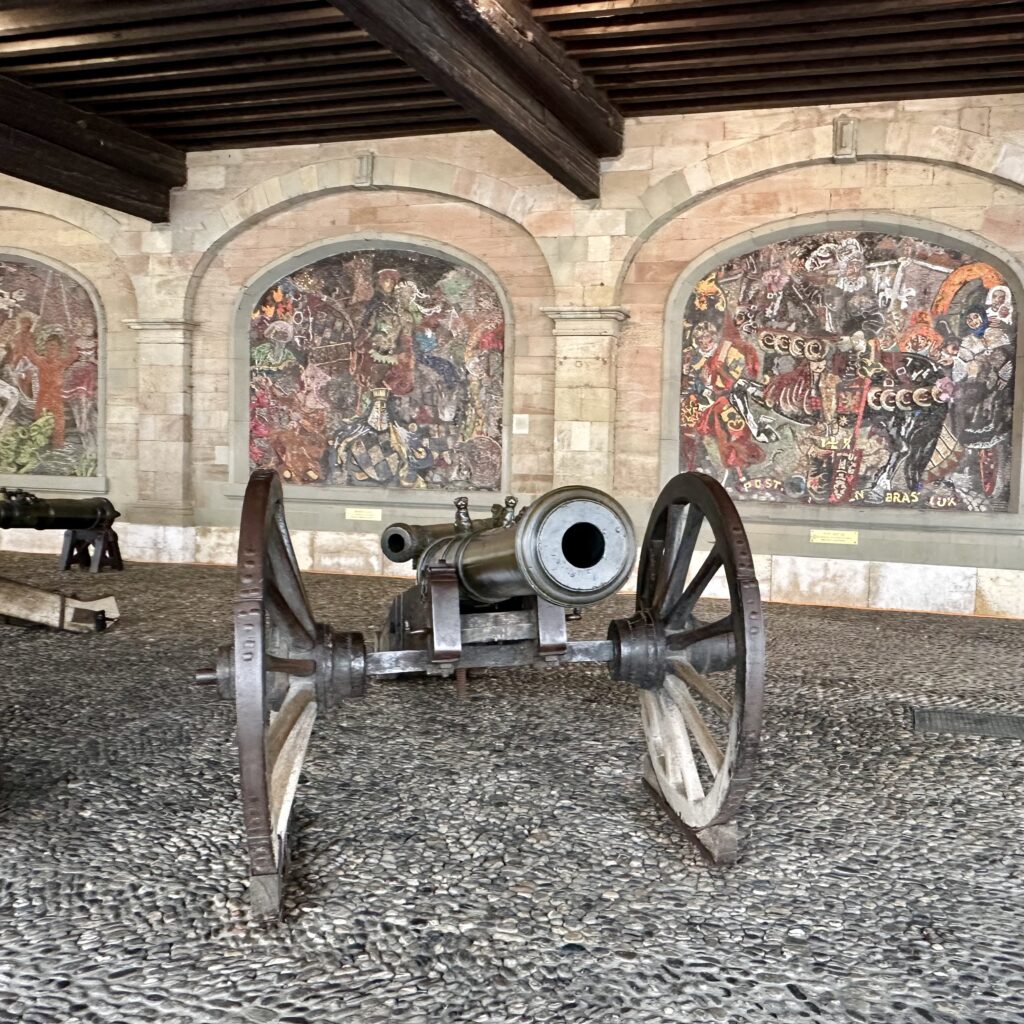
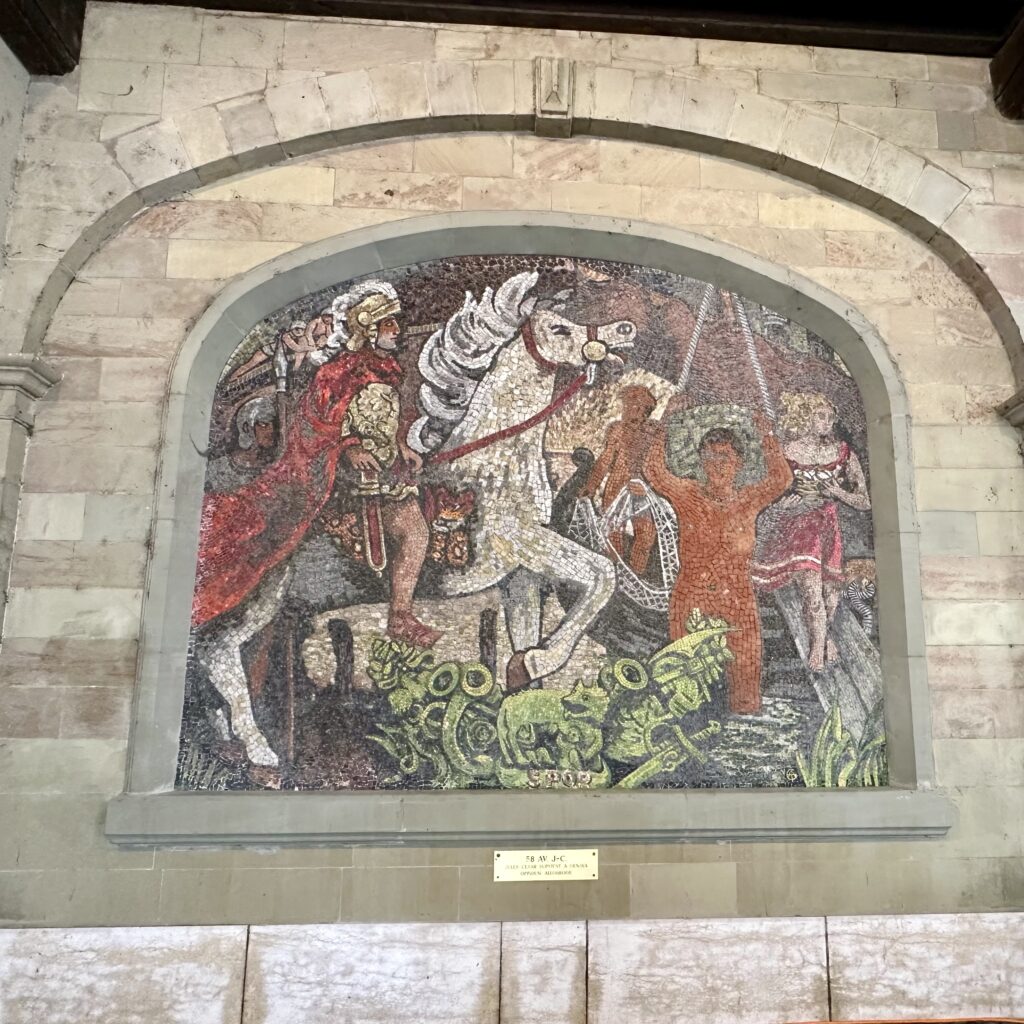
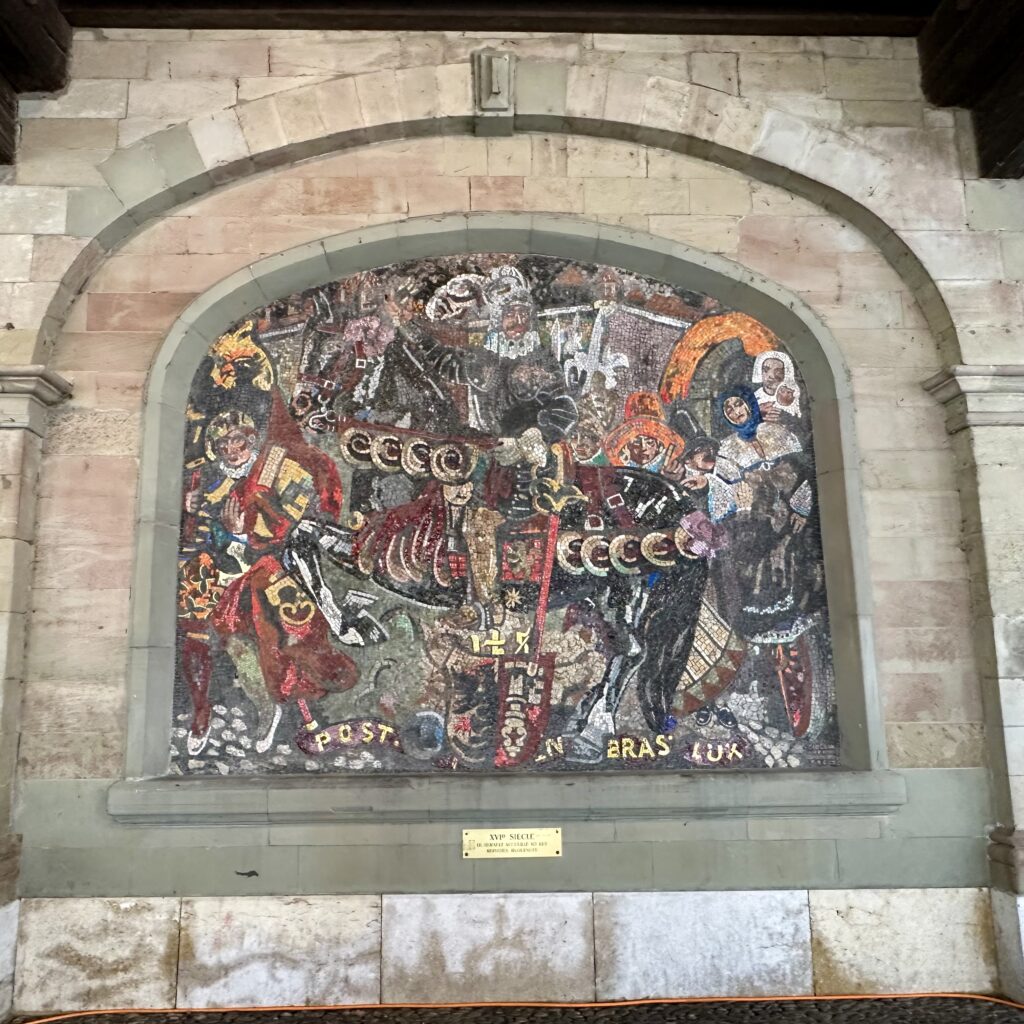
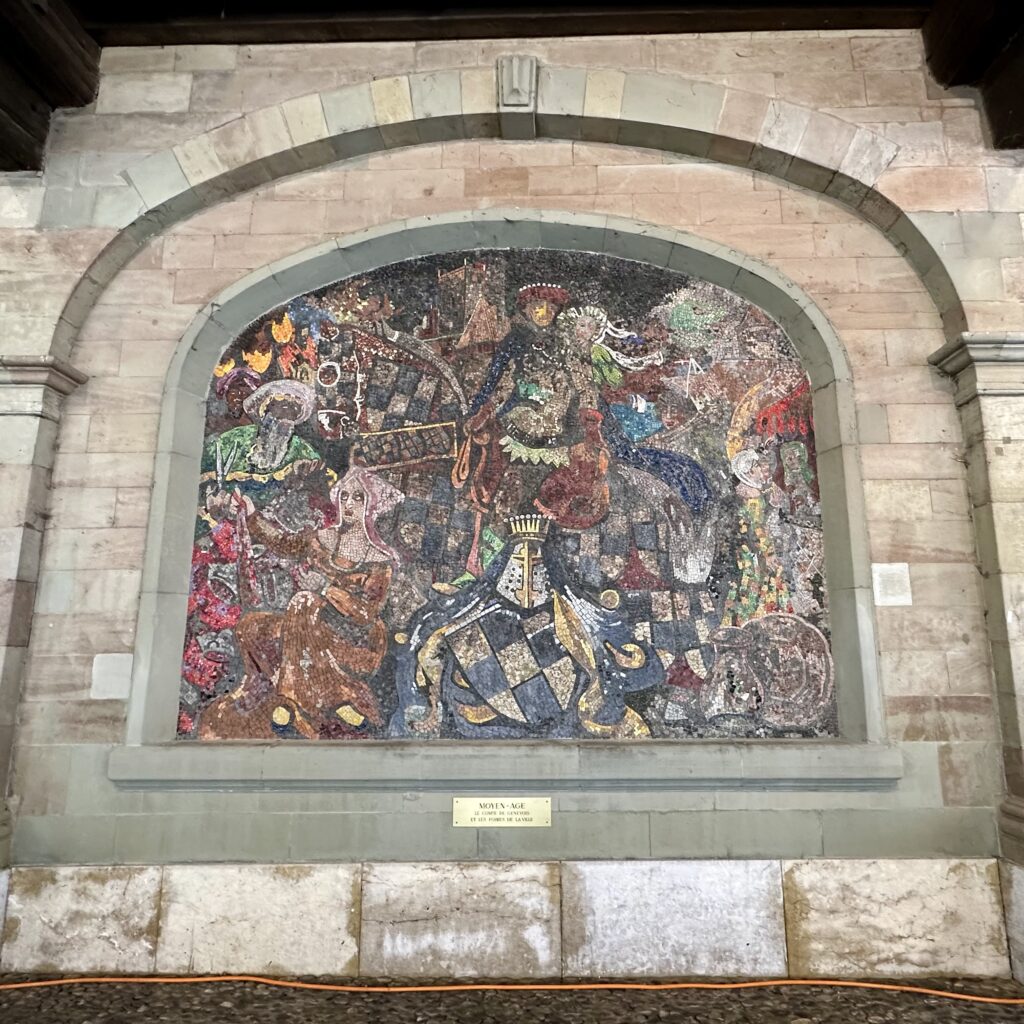
Brunswick Monument – is a mausoleum built in 1879 in the Jardin des Alpes to commemorate the life of Charles II, Duke of Brunswick (1804–1873). He bequeathed his fortune to the city of Geneva in exchange for a monument to be built in his name and it should feature statues of his father, Frederick William, and his grandfather, Charles William Ferdinand. It should also imitate the style of the 14th century Scaligeri tombs in Verona.
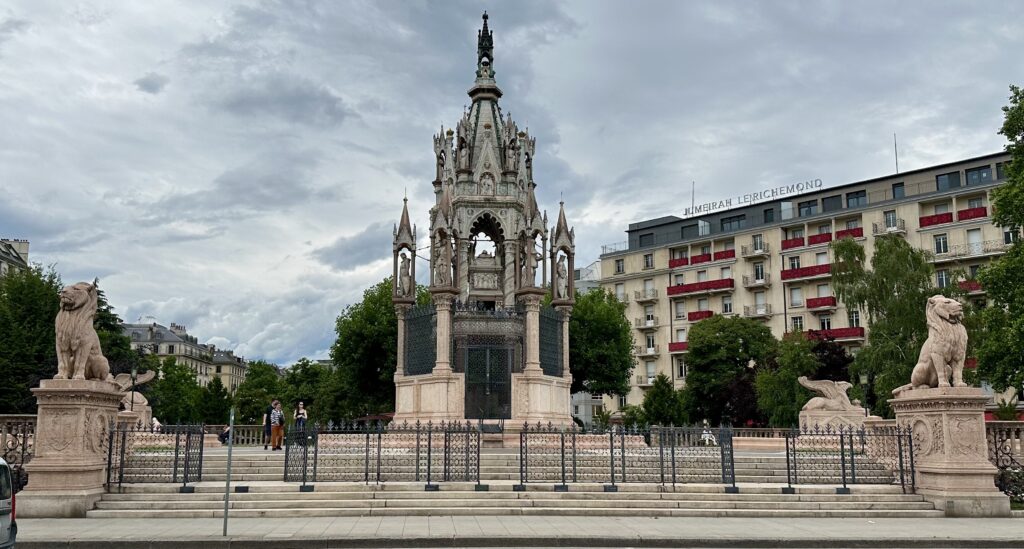
The monument contains the tomb of Charles II and is adorned with intricate carvings, sculptures, and decorative elements, all crafted from Carrara marble.
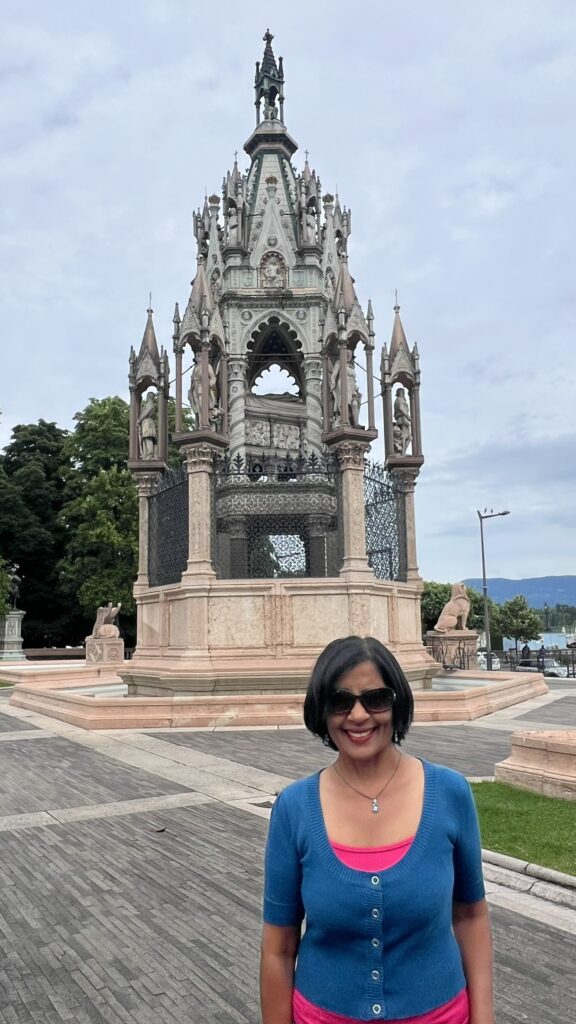
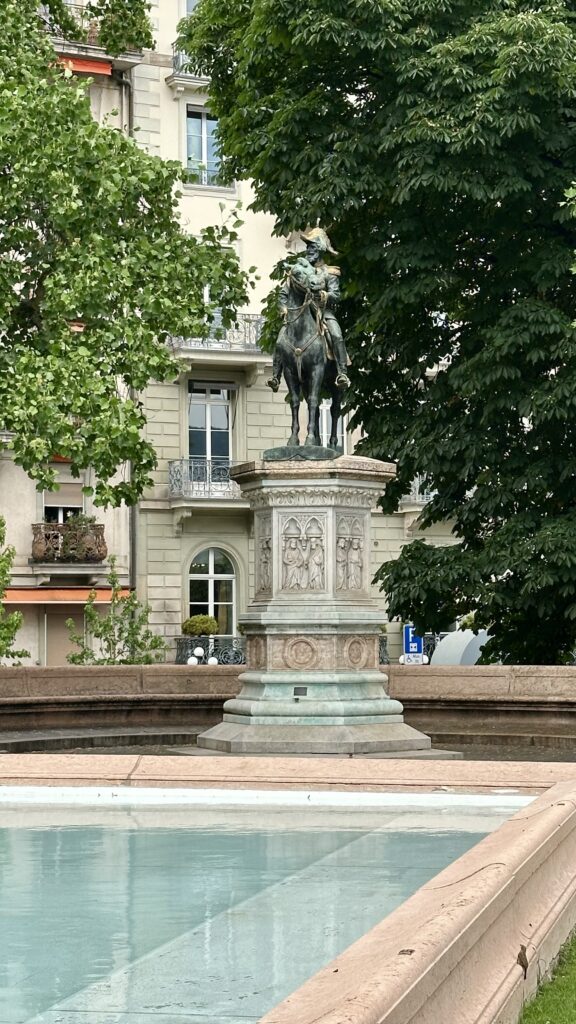
Jet d’Eau (Water Jet) – This large fountain on Lake Geneva, is one of the city’s most famous landmark and is visible from many places around the city. A powerful pump propels the water at a rate of about 500 liters/second, to a height of 145-150m.
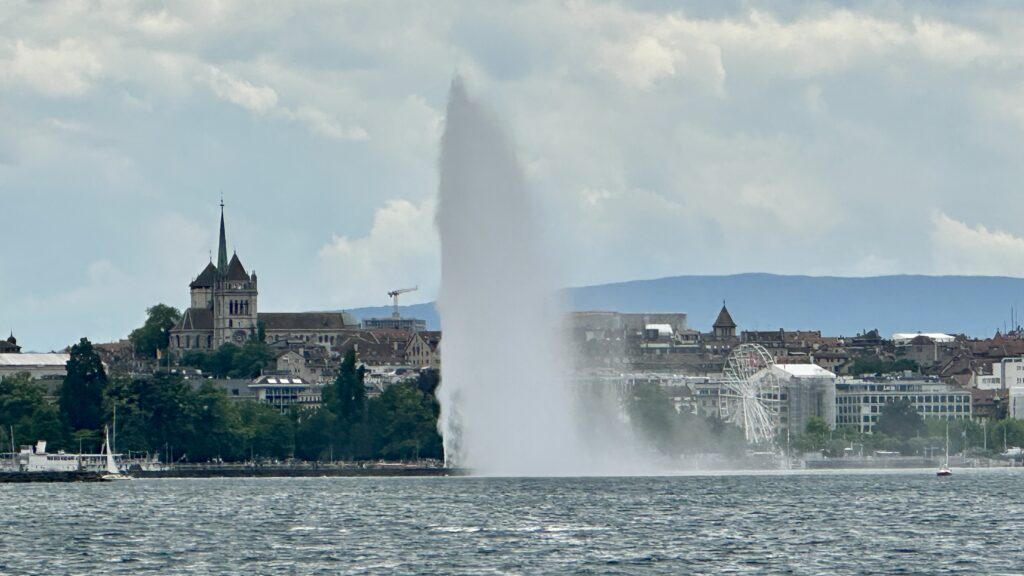
The first Jet d’Eau was installed in 1886 a little further downstream from its present location. The present Jet d’Eau was installed in 1951 in a partially submerged pumping station to pump lake water instead of city water.
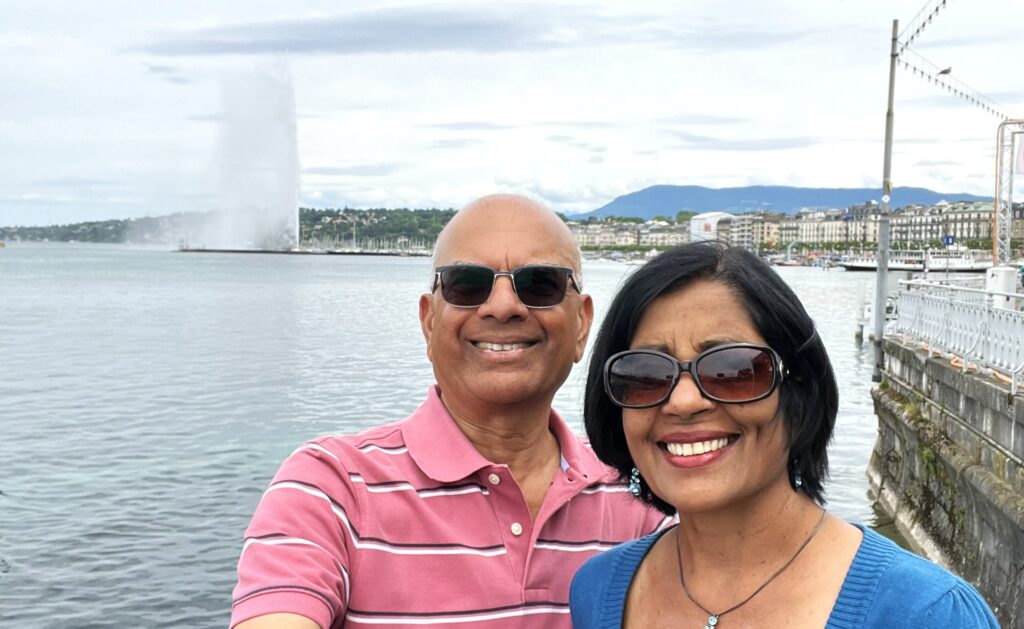
Lake Geneva – A boat ride on this lake is one of the most popular and relaxing things to do. You will get a lovely view of the city, lighthouses, the buildings.
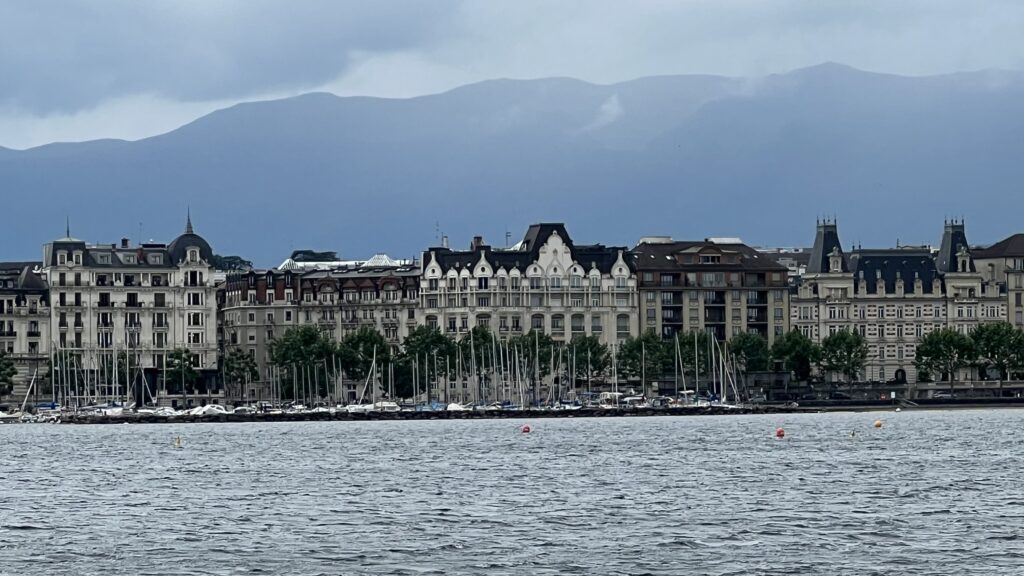
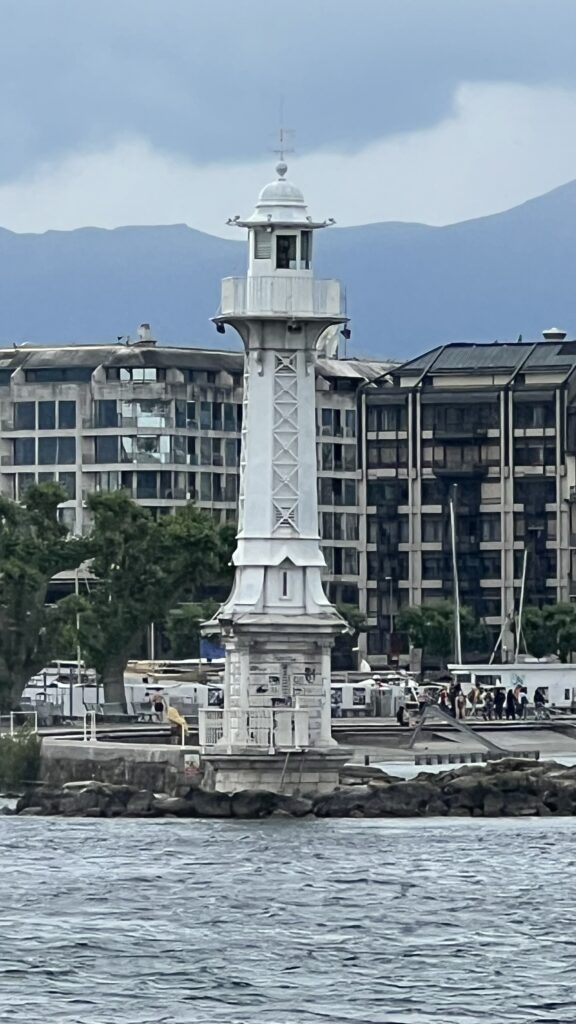
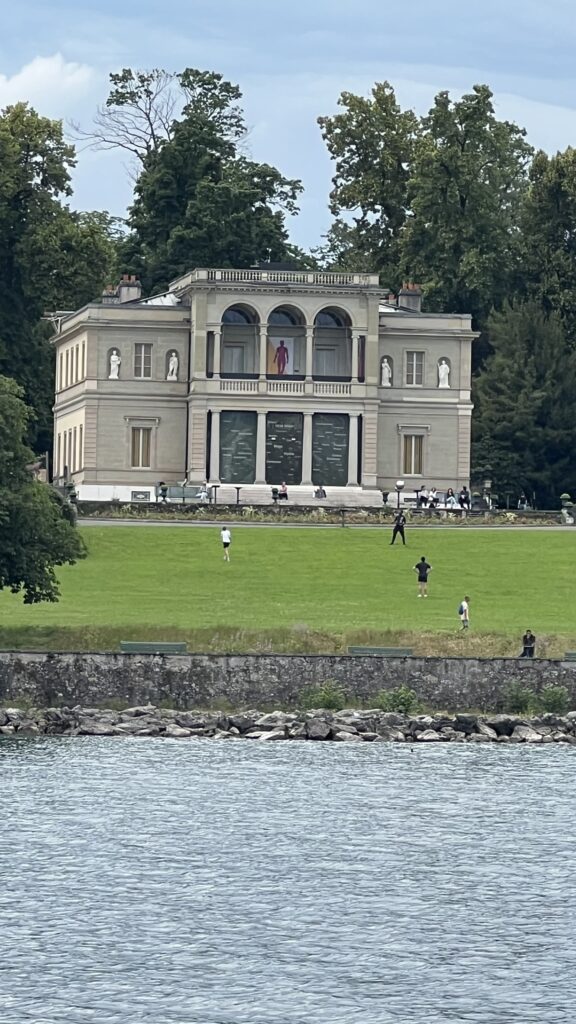
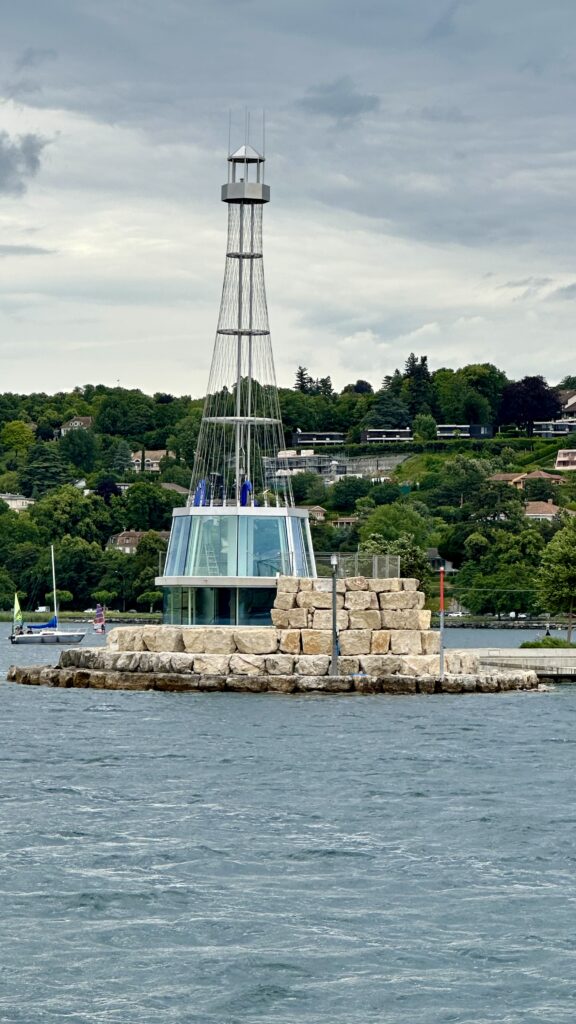
Jardin Anglais (English Garden) – This garden is located along the south side of the lake Geneva and is a charming place to take a relaxing walk. It features the famous “Flower Clock” made up of hundreds of flowers. The clock, set on a slight slope for easier viewing, changes with the seasonal blooming plants that form its colorful face.
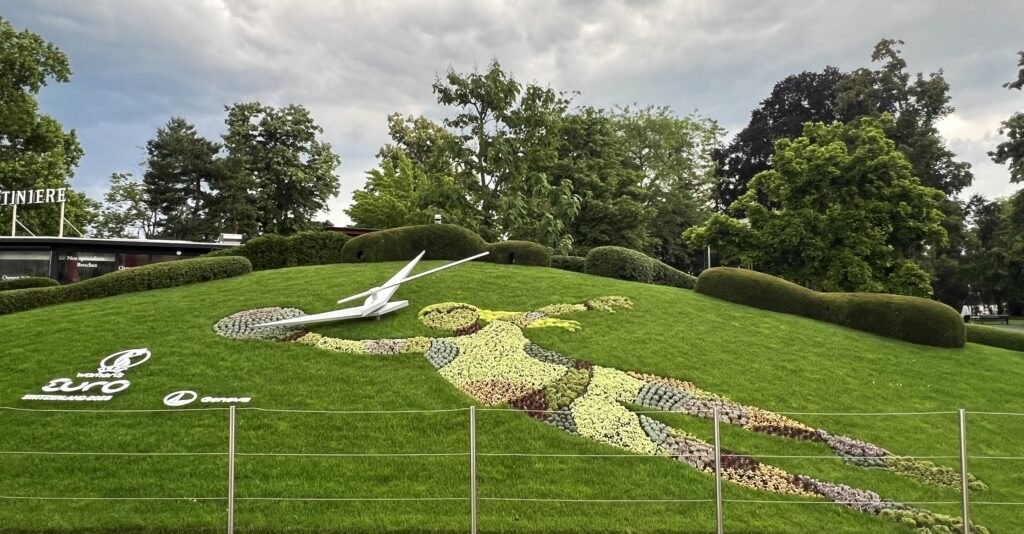
The garden also features a National Monument and a large fountain.
The National Monument was inaugurated in 1869 to commemorate the entry of Geneva into the Swiss Confederation. The 2 two young women standing proudly on a pedestal symbolize the Republic of Geneva (with the crenellated headgear) and Helvetia, Switzerland.
The bronze fountain is known as the Fountain of four seasons.
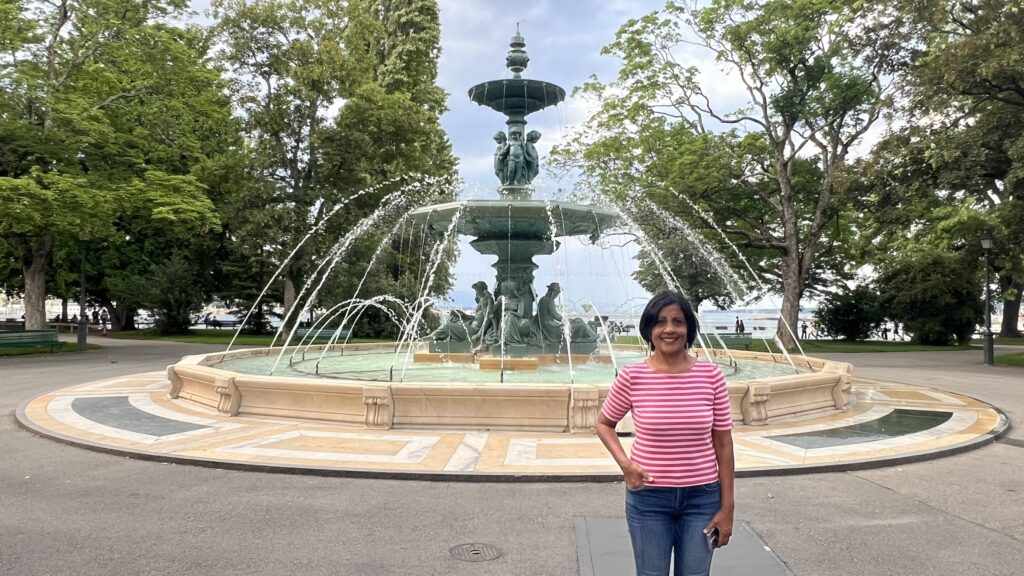
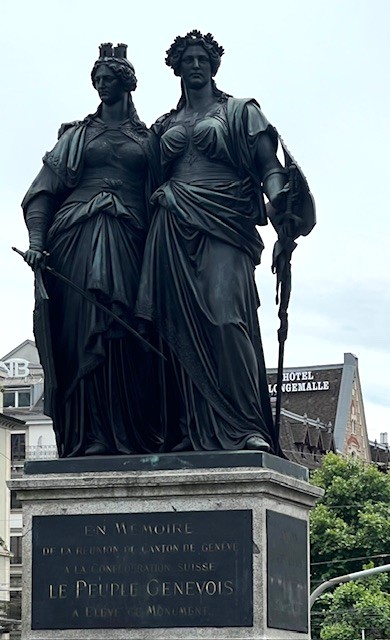
Palais des Nations – The large complex of marble buildings is the European headquarters of the United Nations, a position it assumed after the demise of the League of Nations, whose world headquarters was here. It has become a center of world diplomacy, the largest UN center after New York, with upwards of 25,000 delegates passing through annually. On a guided tour, you can learn about the work carried on here and see the artworks and interiors donated by countries all over the world.
From our hotel there was a direct public transport to this place. Guided tour in English was not available on the days we were in Geneva. We were only able to check out the building and the area around from outside.
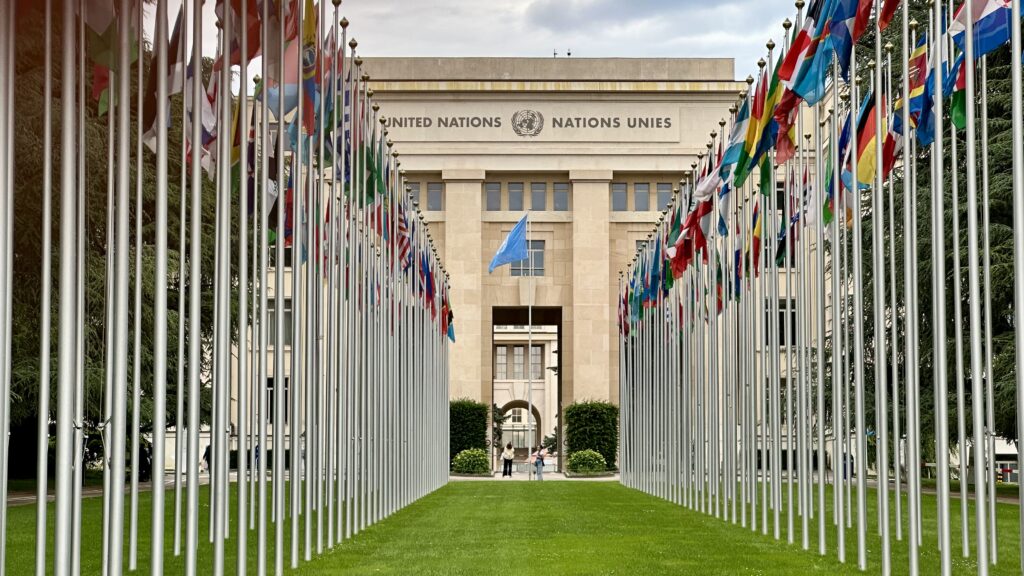
The UN Office in Geneva, features a prominent “Alley of the Flags” at its entrance. This area displays the flags of all 193 UN Member States, along with the UN flag itself, and the flags of two Observer States: the Holy See and Palestine. The flags are arranged in a specific order, often alphabetically, and can be seen as a symbol of global unity and cooperation.
Broken Chair – Opposite the Palais des Nations, there is a huge plaza with a broken chair. The giant broken chair standing on 3 legs was made in 1997 and symbolizes the campaign against land mines. Its message is simple: remember the victims of landmines, urge your government to promote a ban on landmines.
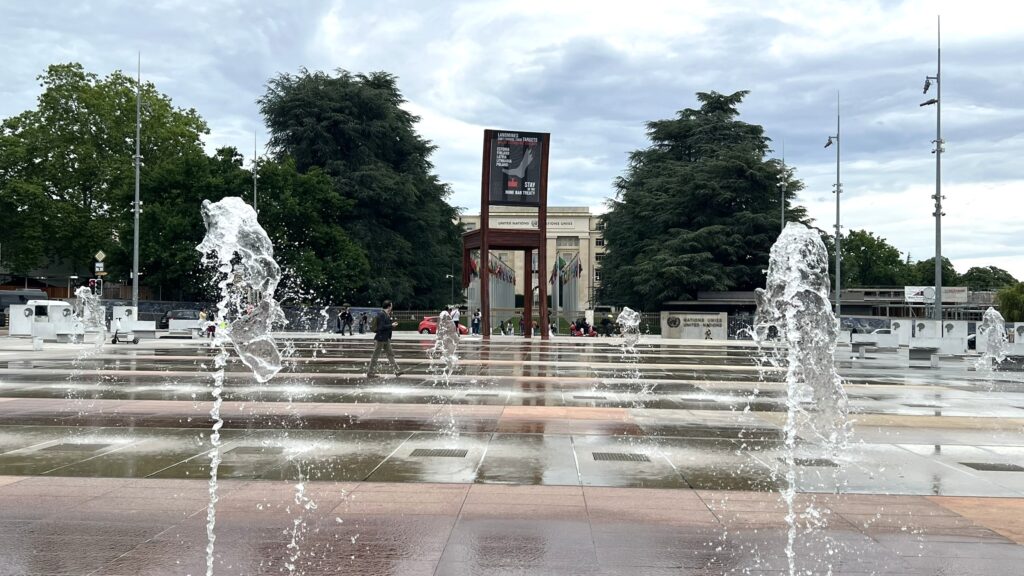
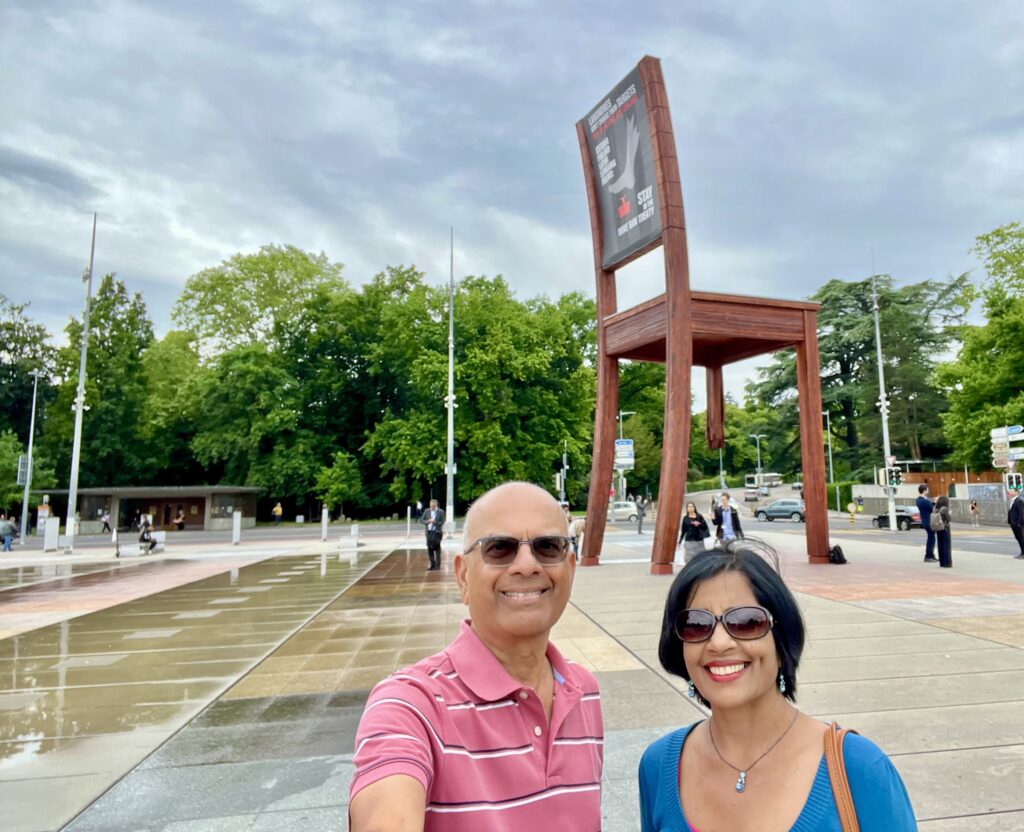
Basilique Notre-Dame – We passed this huge and impressive church a few time as it was near the Geneva train station. It is a Roman Catholic church built between 1852-1857. We did not have time to see the interior, but it must be as impressive as its exterior and worth a visit.
